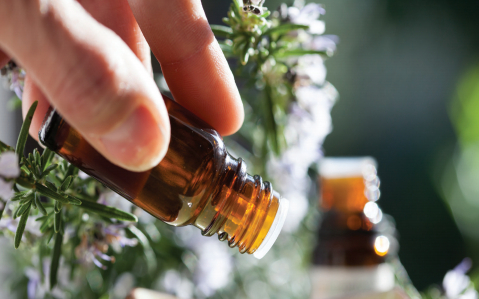
To give your customers the best experience so they come back and buy more, you need to get the oil flow rate right. Why? Because if the oil comes out too fast, the customer is irritated by wasted product or a messy experience. If the oil comes out too slow, the customer may assume that the product doesn’t work, or the dispenser is broken, leading to negative reviews online and no repeat business.
It all comes down to packaging. If you get the right oil flow rate, you’ll create a positive customer experience, leading to repeat sales.
Three considerations play a key role in choosing the optimal packaging. You need to consider the viscosity of the liquid you are dispensing, the user’s experience with dropper dispensing, and the size of the dropper insert.
Viscosity Matters
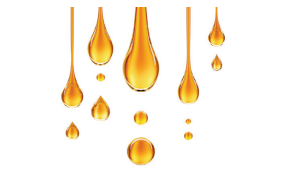 Viscosity refers to how thick or thin the liquid and that affects what size dropper insert is needed to achieve an optimal flow rate. When you start to mix essential oils together for your final product, it’s important to stop and consider how the viscosity of each essential oil blend varies. Mixing different oils together creates a whole new viscosity and the dropper insert size needs to be just right to dispense the oil appropriately.
Viscosity refers to how thick or thin the liquid and that affects what size dropper insert is needed to achieve an optimal flow rate. When you start to mix essential oils together for your final product, it’s important to stop and consider how the viscosity of each essential oil blend varies. Mixing different oils together creates a whole new viscosity and the dropper insert size needs to be just right to dispense the oil appropriately.
No matter the viscosity of your product, we’ve got you covered. Carow Packaging offers 9 different sizes of dropper inserts with orifice sizes ranging from .55mm to 2.0mm. To help you narrow down your choices, here are some general guidelines.
- Essential oils with a thinner viscosity include tea tree oil, orange, lemon, eucalyptus, lime, cypress, ginger, lavender, peppermint, and wintergreen. For these oils or any blend with a thin viscosity, you might choose a smaller orifice size (.55mm-1.0mm).
- Oils with a thicker viscosity include vanilla, patchouli, cedarwood, vetiver, clary sage, jasmine sambac, and ylang ylang. These oils or thicker blends would work best with a larger orifice size (1.0mm-2.0mm).
Take these guidelines into consideration but to find the perfect flow rate for your products you’ll need to test dropper inserts with different orifice sizes. (We can help you with samples of different dropper inserts. Just give us a call.)
Educate for Success
If you’re in the business of essential oils, you know that some users have a tendency to turn the bottle upside down and start shaking it to release the product. However, that is not how the product is designed to work. This can lead to user frustration.
The key to ensuring great customer satisfaction with your oils is to educate the user. We know that any space on your packaging is valuable real estate. However, it can boost customer satisfaction if you include instructions on the box or bottle on how to use the product. Encourage the user to let the dropper insert do all the work. There are two types of dropper inserts so depending on which you choose, instruct the user on proper application.
Vertical droppers
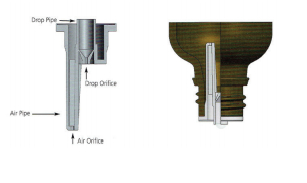 If your product is using a vertical dropper, instruct the user to turn the bottle upside down 180 degrees. The dropper will then do the work, letting the pressure differential take place. Air will go in as the drop falls out with just the right amount of oil dispensing.
If your product is using a vertical dropper, instruct the user to turn the bottle upside down 180 degrees. The dropper will then do the work, letting the pressure differential take place. Air will go in as the drop falls out with just the right amount of oil dispensing.
Horizontal droppers
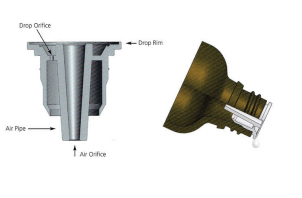 If your product uses horizontal droppers, instruct the user to turn the bottle like they are pouring a bottle of wine–holding the dropper at about 135 degrees above the dispensation surface. The pressure differential will take place again as the air goes in and the drop falls right out.
If your product uses horizontal droppers, instruct the user to turn the bottle like they are pouring a bottle of wine–holding the dropper at about 135 degrees above the dispensation surface. The pressure differential will take place again as the air goes in and the drop falls right out.
Regardless of which dropper insert your product uses, the flow rate for your essential oils should have these characteristics:
- First drop dispensed in 3-5 seconds
- Subsequent drops flow at 1-2 drops per second
Choosing the Right Dropper Makes All the Difference
As we have mentioned, when it comes to giving your customers the best experience with your product, the dropper insert you choose plays a big role in delivering the best flow rate. The dropper insert controls the flow of the liquid from the bottle. Once inserted correctly, drops should start to flow within 3 seconds of holding the bottle upside-down or at a side angle, depending on the orientation.
Troubleshooting
If the product doesn’t start flowing in about 3-5 seconds, or if the essential oil drops take longer than 3 seconds to dispense, then maybe the surface tension or viscosity of the product are coming into play. To compensate and get a better flow, try changing the dropper insert to increase or decrease the flow rate.
For example, try these troubleshooting options:
- Choose a larger liquid exit (orifice size) to increase the flow of drops or to handle thicker products.
- To reduce the flow or to handle thinner viscosity products, choose a smaller orifice size.
- In addition to the liquid orifice, different air orifice sizes can be selected to increase or decrease the flow of the drops.
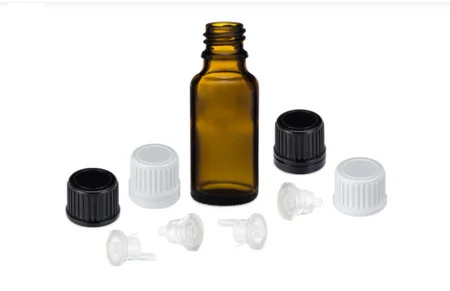 The most accepted dispensing solution for precise, measured drops is the EuroDrop® system. With one product orifice and one air orifice, the dropper insert uses hydro-static action to transfer product from the bottle.
The most accepted dispensing solution for precise, measured drops is the EuroDrop® system. With one product orifice and one air orifice, the dropper insert uses hydro-static action to transfer product from the bottle.
We have been helping customers find the perfect flow rate for over 30 years. We know the essential oil market and offer the widest range of products for your dispensing success. And, now, we are the only provider to make EuroDrop caps and inserts in the USA!
If you need more information on dropper insert choices or would like someone to evaluate your flow rate to make sure it is optimized, let us help you. Contact our Solutions Specialists at Carow Packaging for additional advice or samples at 815-455-4600. We are happy to help with your packaging needs.